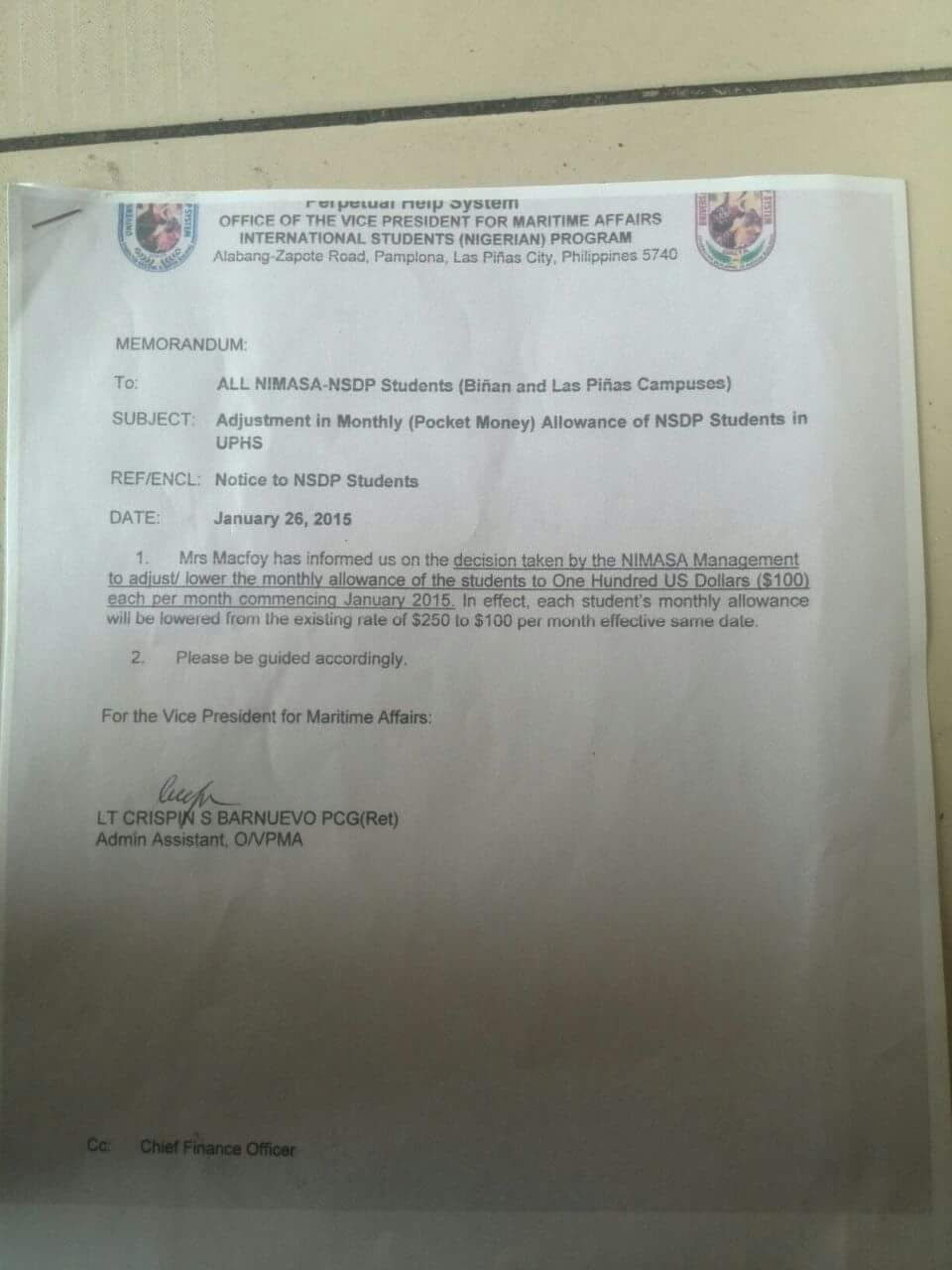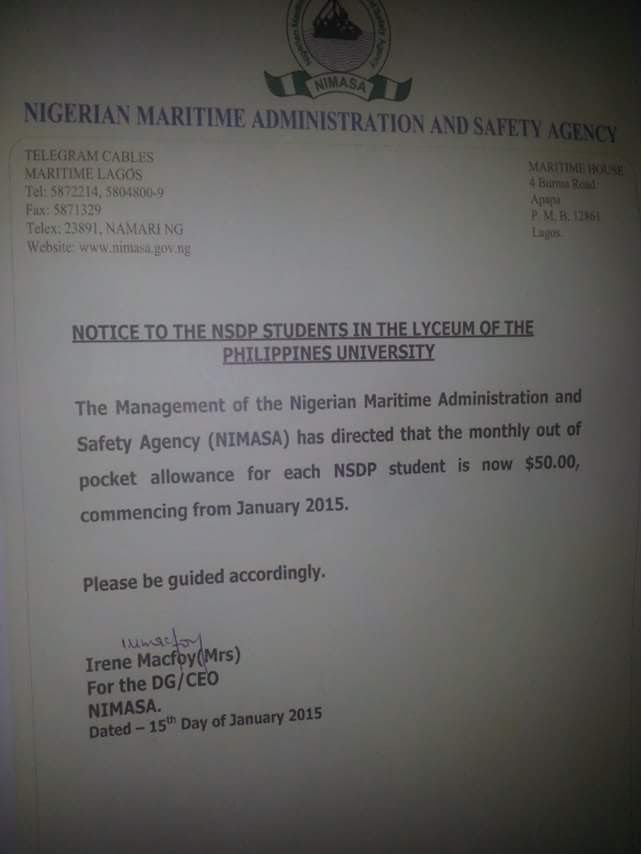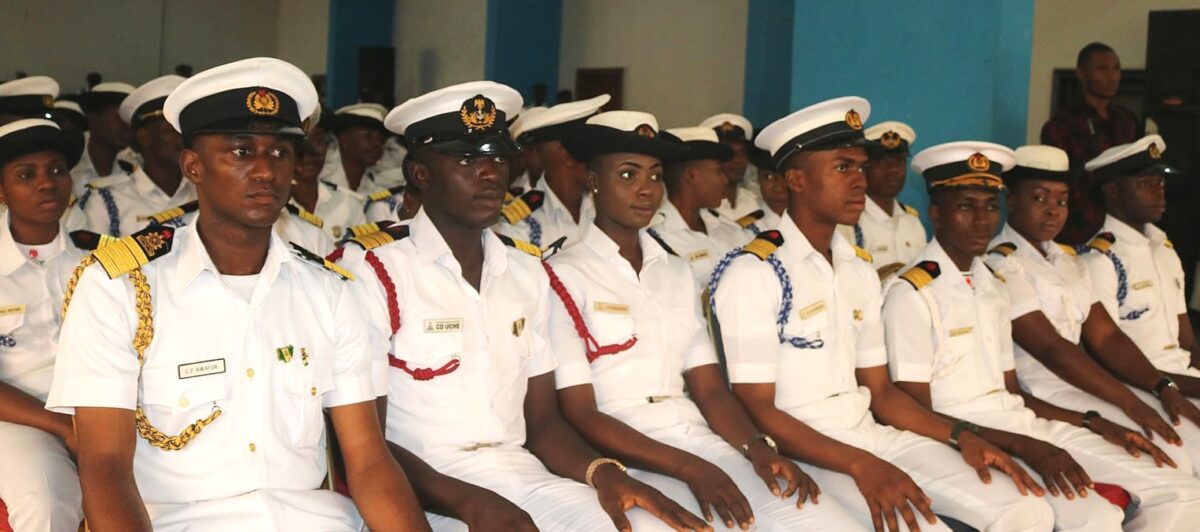Some beneficiaries of the Nigerian Maritime Administration and Safety Agency, NIMASA's Nigerian Seafarers Development Programme, NSDP have decried wha
Some beneficiaries of the Nigerian Maritime Administration and Safety Agency, NIMASA’s Nigerian Seafarers Development Programme, NSDP have decried what they describe as the agency’s abandonment of them, as many who began the programme in 2012 are unable to complete it or work due to a lack of funding.
Over the past month, these beneficiaries detailed how 170 of them received the scholarship with promises that they would undergo two to four-year courses in the United Kingdom, India, Philippines and Romania, then spend 12 months on a merchant ship, and then obtain a Certificate of Competency, CoC and Standard of Training, Certification and Watchkeeping, STCW.
These plans all began to crumble a year after they each travelled to these countries.
In March 2013, Irene Macfoy, an Assistant Director at NIMASA at the time, allegedly used her position as Head of the NSDP to transfer £1,074,600 from NIMASA’s account in Zenith Bank UK to an offshore account belonging to Swiss Bulk Carriers S.A while pretending to train 54 Nautical Science and Marine Engineering students.
In 2018, following an investigation by the EFCC, a judge ordered a forfeiture of part of the money the anti-graft agency was able to recover.
The scholarship awardees were oblivious of this scam at the time but, two years later, their stipends took a hit.
Via a memo dated January 26, 2015, from the Office of the Vice President for Maritime Affairs International Students Programme, the beneficiaries learnt of a $150 cut to their $250 monthly stipends.
Crispin Barnuevo, administrative assistant in the VP’s office at the time, signed this memo (see document below)
The memo read, “Mrs Macfoy has informed us of the decision taken by the NIMASA management to adjust/lower the monthly allowance of the students to $100 each per month commencing January 2015. In effect, each student’s monthly allowance will be lowered from the existing rate of $250 to $100 per month, effective the same date.”
The bad news was worse for students in the Philippines when a January 15, 2015 letter reached them. On behalf of Akpobolokaemi Patrick, the NIMASA Director General at the time, Macfoy allegedly informed them via this letter that their pocket allowance would be $50.
In 2015, the official exchange rate was between N179 per dollar and N200 per dollar. Using the highest official rate point, a $50 stipend meant each awardee was getting N10,000 per month. This was N8,000 less than the country’s minimum wage at the time.
When Patrick was heading the agency, NIMASA selected hundreds of students to study Marine Engineering, Naval Architecture and Marine Transportation in the University of Cebu, Cebu City; Lyceum of the Philippines University, Batangas; and University of Perpetual Help System Dalta, UPHSD in the Philippines. This was the programme’s third year.
In the UK, the selected schools were South Shield Marine School at South Tyneside College, Liverpool; John Moore University; and the University of Sunderland. In India, it was AMET University, Chennai, while in Romania, the choice institution was Maritime University, Constanta.
“I was part of phase one, which is the academic phase in the classroom for two, three or four years depending on the curriculum,” one of the NSDP beneficiaries who revealed this on condition of anonymity for fear of retribution said.
“This is the phase where the cadet undertakes their theoretical and laboratory work. The second phase was the Seatime phase during which cadets would be onboard merchant ships of required capacity for at least 12 months. During this phase, cadets should receive wages as per the International Maritime Organisation (IMO) Maritime Labour Convention (MLC) standard. Unfortunately, many cadets have not undergone this phase yet.
“Upon completion of the Seatime phase of the NSDP scheme, cadets are expected to immediately proceed to acquire their CoC and other Mandatory STCW Certificates such as Basic Training, Medical Emergency First Aid (MEFA), Advanced Fire Fighting (AFF), Survival Craft and Rescue Boat other than Fast Rescue Boat (SCRB), Basic Training for Oil, Chemical and Liquified Gas Tanker Cargo Operations, Advanced Training for Oil, Chemical and Liquified Gas Tanker Cargo Operations, Engine or Bridge Resources Management, Human Element and Leadership Management (HELMS), ARPA/RADAR, GMDSS-GOC, ECDIS, ERS, Marine High Voltage.
“Some cadets took the initiative and paid to secure their own Seatime, and some went as far as spending millions of Naira to procure their CoC. According to the letter of Undertaking signed by CoC Self Sponsored Cadets, NIMASA was to reimburse the sum of $6,339.00 to such cadets. As Nigeria will have it, NIMASA has not paid them till now.
“The cost of acquiring the said CoC in the Philippines is not more than $12,000 per cadet. Yet, the agency neglected our needs and kicked off a new NSPD Batch of over 280 cadets in India. These fresh cadets are presently in Centurion University, India.”


